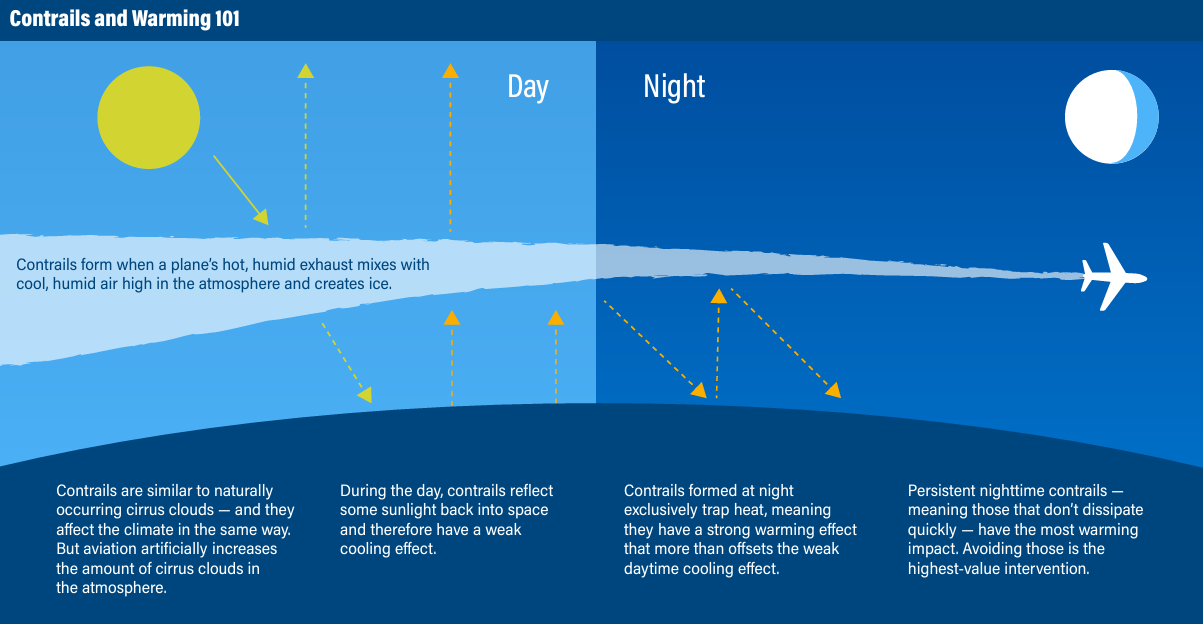NORTHAMPTON, MA / ACCESSWIRE / August 27, 2024 / American Airlines:
Innovative Pilot Program Shows 54% Reduction in Contrail Formation Using AI and Predictive Mapping
Originally published in American Airlines' 2023 Sustainability Report
Reducing aviation's contribution to climate change requires understanding all our industry's impacts and identifying ways to address them. Condensation trails - or contrails - form when airplanes fly through layers of humidity, and they may account for approximately 35% of aviation's global warming impact, according to the Intergovernmental Panel on Climate Change.4 Partnerships among the aviation, academic and technology communities have developed strategies aimed at predicting when a flight path is likely to cause a contrail and deploying an alternate path at a slightly lower altitude to avoid doing so. These contrail avoidance strategies, while still in the early stages of exploration, hold the promise of being among the most cost-effective and scalable climate solutions for the aviation industry in the near term.
How American is helping accelerate solutions
American is helping lead the way toward developing and testing contrail avoidance methods. In 2023, we participated in a first-of-its-kind study led by Google Research and Breakthrough Energy to help advance the science on contrail avoidance. The study tested whether we could identify atmospheric zones likely to create contrails and give pilots sufficiently accurate information to avoid creating those contrails. Our partners combined large datasets - including satellite imagery, weather and flight path data - with artificial intelligence (AI) to develop contrail forecast maps. A small group of American pilots then flew 70 flights over six months using the AI-based predictions to make small modifications to routes that were projected to create contrails.
The Potential
Relatively low-cost and high-impact climate intervention
Initial models for predicting highest-severity contrails have shown high accuracy
Rerouting a small percentage of flights could avoid the majority of contrail warming
Actions Needed
Buy-in across airlines and the flight planning ecosystem for large-scale implementation
Cooperation of, and close coordination with, air traffic control authorities
Continued research to understand the climate impacts of contrails and improve contrail avoidance methodologies and validation
The Challenges
Refining the science to reduce uncertainty related to the warming impact of contrails
Continuing to improve the models that forecast where highest-severity contrails are likely to be created
Expanding satellite coverage to observe and verify contrail formation
Quantifying and effectively balancing the benefits of avoiding contrails with the impacts of increased fuel use as a result of avoidance maneuvers
The flights that used the AI predictions reduced contrail formation by 54%, as measured by distance, compared with flights where pilots did not use the predictions. While additional research is needed to determine if this success can be replicated and scaled, the results of this small-scale test provide an encouraging proof point of a promising climate solution.
54% reduction in contrail formation on American's test flights - among the first real-world proof points that commercial flights can verifiably avoid contrails
4 See https://www.ipcc.ch/report/ar6/wg3/downloads/report/IPCC_AR6_WGIII_Chapter10.pdf for more information.

View additional multimedia and more ESG storytelling from American Airlines on 3blmedia.com.
Contact Info:
Spokesperson: American Airlines
Website: https://www.3blmedia.com/profiles/american-airlines
Email: [email protected]
SOURCE: American Airlines




